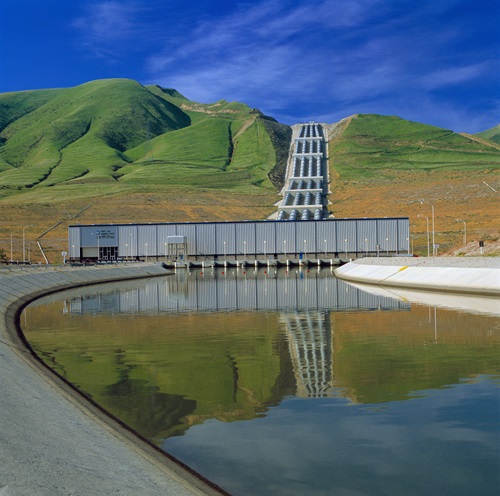SWP Financing and Cost Recovery

The Ira J. Chrisman Wind Gap Pumping Plant, located in Kern County, CA, helps pump water over the Tehachapi Mountains. DWR/2013
A large portion of the State Water Project (SWP) has been financed from the issuance of general obligation and revenue bonds. Bond issuances account for 82 percent of the SWP financing (2015*). Full repayment of these bond funds is being made by SWP water contractors, rather than by the general taxpayer.
Other funding sources have included tideland oil revenues, investment earnings, State appropriations, federal flood control reimbursements, and water contractor advances.
Currently, short-term financing is obtained by commercial paper notes which are replaced periodically by long-term revenue bonds.
Burns-Porter Act
The Burns-Porter Act, also known as the California Water Resources Development Bond Act, authorized the financing of construction and ongoing management of the State Water Project. After years of negotiation, the Act laid out the terms and assurances for water interests throughout the state, seeking compromise for the conflicting interests of northern and southern California. California voters narrowly approved the Burns-Porter Act in November 1960.
Central Valley Project Act
Additional funding for portions of the SWP has been obtained through the sale of DWR’s long-term Central Valley Project (CVP) Revenue Bonds. The CVP Revenue Bond financing program is a continuing program and is the primary source for the funding of the construction of new SWP facilities and the major repair and reconstruction of existing SWP facilities.
Annual Revenue
In 2016*, the annual revenue for the SWP came from three primary sources:
- Water supply: 87 percent
- Power sales: 7 percent
- Federal and State reimbursements: 6 percent
Annual Costs
The SWP’s annual costs include the salaries of a diversified team of engineers, biologists, specialists in water development and power generation, hydroelectric plant technicians, and civil maintenance workers, as well as expenses (equipment, supplies etc.) required to design, construct, and operate and maintain SWP facilities. Annual costs also include power purchases, exchanges, and sales.
Annual payments by SWP water contractors total about $1.1 billion per year (2015*). Of that amount, operation and maintenance, power and replacement (OMP&R) costs account for 59 percent. Bond debt service payments for financing the construction of SWP facilities are about 28 percent. The remaining 13 percent includes deposits for replacement reserves, insurance and other miscellaneous costs or adjustments.
The costs to the SWP water contractors are made up of two major charges: 1) the Delta Water Charge and 2) the Transportation Charge. The Delta Water Charge is the cost of conservation facilities which include the Oroville facilities, the Delta facilities, the San Luis facilities, and a portion of the aqueduct leading from San Luis facilities to the Delta facilities. It is a unit charge applied to each acre-foot of SWP water that SWP water contractors are to receive, in accordance with their contracts. The Transportation Charge covers the use of facilities required to deliver water to the service area of each SWP water contractor. Thus, SWP water contractors that are farther downstream from the Delta pay higher Transportation Charges than those near the Delta.
* Per the most-recent validated data.
